Thermal Tips for Wine and Cheese
From champagne to merlot and brie to blue, wines and cheese have very specific storing and serving temperatures. We have the thermal tips you need to be prepared for guests, any time of the year.
Wine
Why Serve Wine at Specific Temperatures?
Wines and have specific layers of flavor that can only be fully enjoyed when they’re experienced at the proper temperature. Wine served too cold will dull taste bud sensation so you aren’t able to detect subtleties.
Ron Dougherty, former Executive Director of the Raise a Glass Foundation and 13-year Head Judge at the Finger Lakes International Wine Competition, says that:
temperature affects how we taste different compounds in foods and beverages – salt becomes less pronounced as foods get colder while acids become more pronounced. In wine the three key temp-affected components are alcohol, acid and aromatics. The ‘burn’ of alcohol on our palate decreases as temperature decreases. Vodka is a very good example of this – the same vodka will be very ‘hot’ at room temp but far less at freezer temp. And aromatic compounds become more noticeable as temperature increases.
—Ron Dougherty, personal correspondence
Of course, careful control of temperatures should start with the way you store your wine, long before you serve it. Here are some helpful hints for the proper storage of your wines:
5 Tips for Storing Wine:
- Start off with the right storage temperature. Keep it cool, but not too cool. The optimal storage temperature range is 45–65°F (7–18°C) with 55°F (13°C) being cited as the perfect temperature. Average refrigerator temperature is below 40°F (4°C). At that low of a temperature the humidity level drops, the cork can dry out, and air from the fridge can seep into the bottle, damaging the wine. Storing at temperatures 70°F (21°C) or above can cause aromas and flavors to go flat. Avoid dramatic temperature swings. A trip home from the wine store isn’t going to harm your bottle, but leaving it in your car all day in the middle of the summer sure might.
- Wine should be stored away from direct light—that’s why so many wine bottles are tinted. Just like a pair of sunglasses, the tint helps reduce the penetration of UV rays. Exposure to light can cause degradation of flavors.
- Store your wine horizontally. Wine is traditionally stored sideways to keep the cork from drying out, but this isn’t necessary if it will be consumed in a short period of time.
- Keep your wine humid. 50–80% humidity in the storage area is considered optimal. Any higher and mold can grow on the corks and under the foil. (If you want to monitor your wine cellar or fridge, you can use our Thermo Hygrometer.)
- Keep your wine still. Too much jostling can cause chemical reactions in the wine, and sediment in older wines will be disturbed.
Serving Temperatures:
Once you’ve properly taken care of your bottle of wine, be sure its integrity is maintained on its journey to the glass by serving it at the right temperature. There are a lot of wines out there, but you don’t have to be an expert to grasp the basics. There are some general guidelines you can follow for wine temperatures, and Dougherty recommends the following temperature scheme:
- White Wines 45–49°F (7–9°C)
- Red Wines 56–60°F (13–16°C)
- Rosé Wines 48–52°F (9–11°C)
- Sparkling Wines 43–47°F (6–8°C)
- Dessert Wines 48–52°F (9–11°C)
- Fortified Wines 53–57°F (12–14°C)
Within those general ranges, specific varietals have their own optimal serving temperatures for the best drinking experience.
Red wine temperature, white wine temperature: wine serving temperature chart
The advice above is the very roughest of guides that will, when in doubt, land you in safe territory. Of course, there are exceptions to every rule. Some reds like a little more warmth, some whites a little more chill, and you might have other favorites! As Dougherty says,
Starting with these temps is a good rule of thumb, but now comes the fun part…experimenting! Maybe that powerhouse [California] Zin with 15 or higher ABV is just a bit too hot for you at 58°F? Chill it a bit more to reduce the alcohol burn. Serving a crisp Sauv Blanc with very briny oysters? Think about chilling it to 42°F to enhance the acidity which cuts through the saltiness of the brine and sets your palate up for the next oyster! Trying the same wine at different temps is a great way to learn about the wine and discover more about your palate.
-Ron Dougherty
For a jumping-off point on that voyage of discovery, follow this more-detailed chart for wine serving temperatures:
| Vintage Port | 64°F (19°C) |
| Bordeaux, Shiraz | 64°F (18°C) |
| Red Burgundy, Cabernet Sauvignon | 63°F (17°C) |
| Pinot Noir | 61°F (16°C) |
| Chianti, Zinfandel | 59°F (15°C) |
| Madeira | 57°F (14°C) |
| Ideal Wine Storage Temperature | 55°F (13°C) |
| Beaujolais, Rose | 55°F (12°C) |
| Sauternes | 52°F (11°C) |
| Chardonnay | 48°F (9°C) |
| Riesling | 47°F (8°C) |
| Champagne | 45°F (7°C) |
| Ice Wines | 43°F (6°C) |
| Asti Spumanti | 41°F (5°C) |
| Refrigerator Temperature | 35°F (2°C) |
How are these ideal temperatures achieved? After removing the bottle from storage, leave a red wine at room temperature to let the wine’s temperature gently rise. White or sparkling wine can be placed in the refrigerator or in an ice bath to chill to the proper serving temperature.
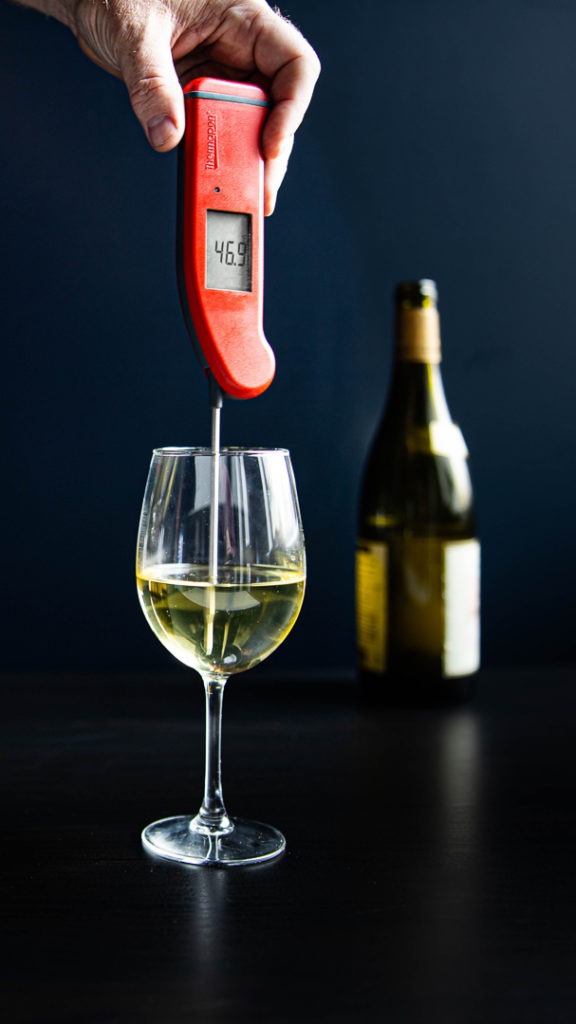
Quickly spot-check the temperature of the wine with an instant-read thermometer like a Thermapen® to make sure you’ve reached the target temperature. Traditional wine thermometers that wrap around the bottle only tell you the surface temperature of the bottle, not the temperature of the wine you’re about to serve. Measuring with an instant-read thermometer, like the Thermapen®, will give an accurate reading.
➤ Thermal Tip: Hold the Glass by the Stem
Always hold a wine glass by the stem rather than cupping the bowl of the glass in the palm of your hand. Body temperature is higher than the serving temperature of wine whether it’s red or white, and your body heat will warm the glass and the wine more rapidly if the glass is held in the palm of your hand. Wine glasses have stems specifically to help maintain the wine’s optimal serving temperature.
Cheese temperatures
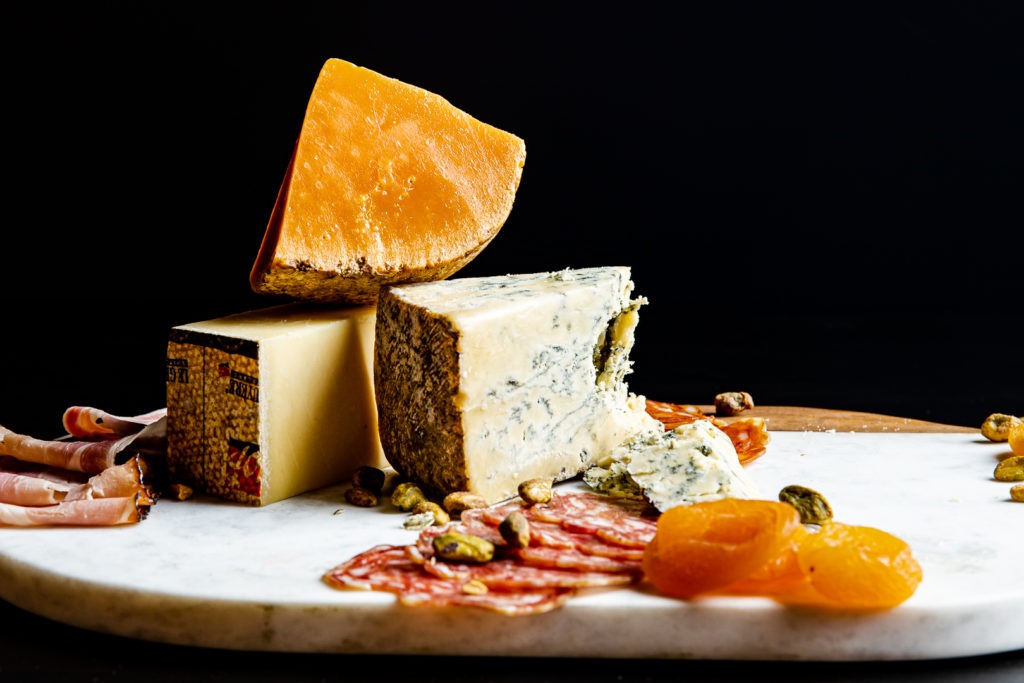
An assortment of artisan cheeses is often on the menu for holiday parties. But how should you store and serve the cheese for the best flavor and texture?
Fine handcrafted cheeses are a product of labor-intensive processes. Once you’ve sought out the perfect cheeses to include for your event, you’ll want to make sure the cheeses are as delicious as they can be by treating them properly after you’ve brought them home.
Tips for Storing
- Temperature: If you want your cheese to continue to develop flavor and texture, store your cheese at 50–60°F (10–16°C) in a humid, dark area. This temperature range is colder than room temperature but warmer than refrigerator temperature. Cheese cellars and wine coolers often sit in this temperature range. If stored at refrigerator temperatures (typically about 36°F [2°C]) the cheese’s active bacteria goes dormant. Generally, the same storage temperature as for wine!
- Wrap: Cheese should be loosely wrapped in waxed or parchment paper, not plastic. Air-tight plastic wrapping traps moisture and encourages the growth of mold. Also, when stored air-tight, cheese can develop nad collect strong, ammonia-like flavors that would normally dissipate through breathable paper.

- Cutting: Cut just before serving. Purchase cheese from a vendor who can cut a portion from a full wheel of cheese fresh for you. Keeping the cheese intact in its rind for as long as possible ensures that the cheese is able to maintain maximum flavor. Once cut, cheeses begin to lose volatile aromas and flavors.
Serving Temperature
Much like wine, the complex flavors of aged cheeses are best experienced when served at their proper temperature. When you’ve invested time and money into selecting cheeses, you’ll want to put the same amount of care into storing and serving them.
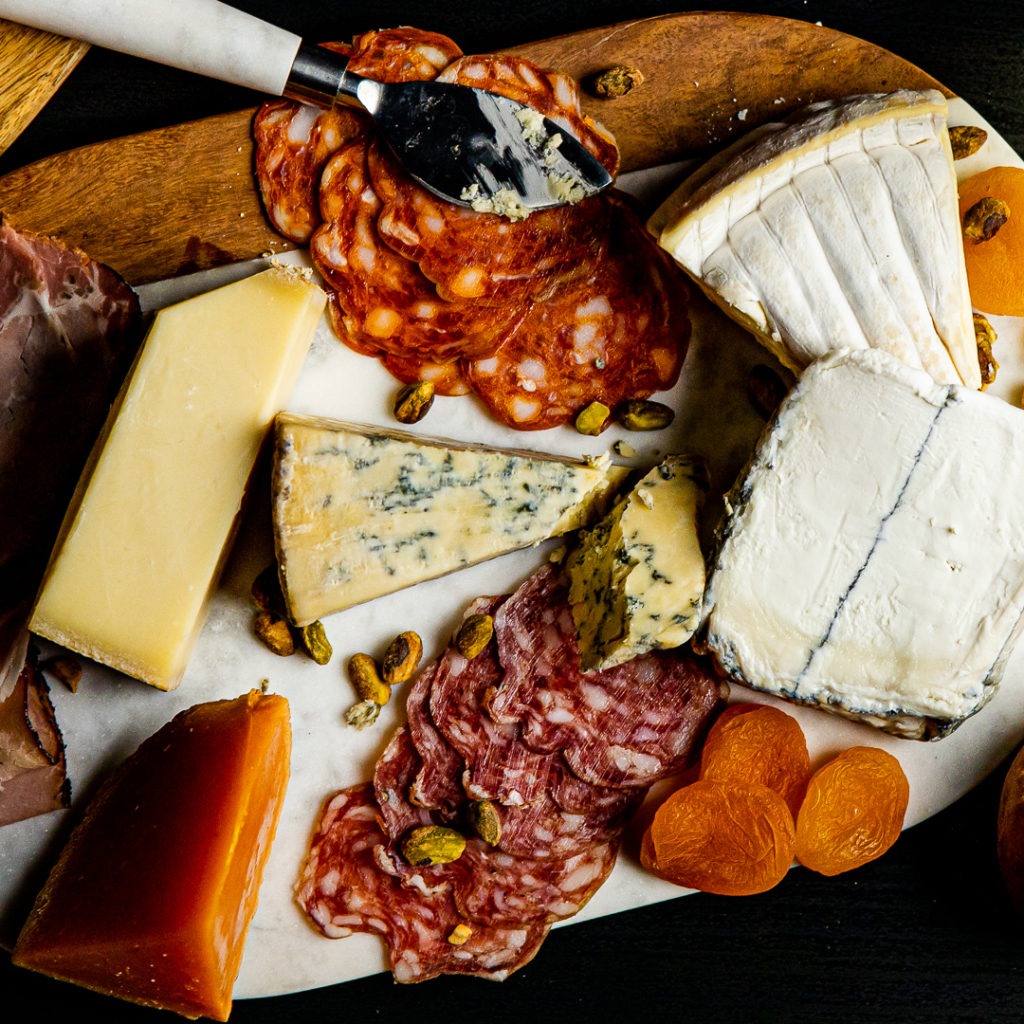
At cold refrigerated temperatures, the milk fat in cheese is hard and waxy, much like cold butter. Gently warming the cheese to room temperature will soften the milk fat for a more pleasant mouthfeel. Serving cheese at cold temperatures directly from the refrigerator also subdues its complex flavors and aromas.
Room Temperature
Mariah Christensen, Specialty Cheese Buyer for Harmon’s Grocery, says that:
All cheeses should be served at room temperature. We perceive flavors better at temperatures close to our body temperature. Cheese has fat soluble flavors which are more available to taste whe the fat is warm.
—Mariah Christensen
Christensen also adds that “Cheese should be [set out] at room temperature 1 hour before serving.” Arrange your cheeses on a board, and let them acclimatize for a full hour prior to serving. Room temperature is considered anywhere in the range of about 65–75°F (18-24°C), with 68-72°F (20-22°C) being the most optimal range for serving cheese.
Before serving use an instant-read thermometer like a Thermapen to quickly check the internal temperature of each cheese to be sure it has warmed thoroughly from edge to edge.
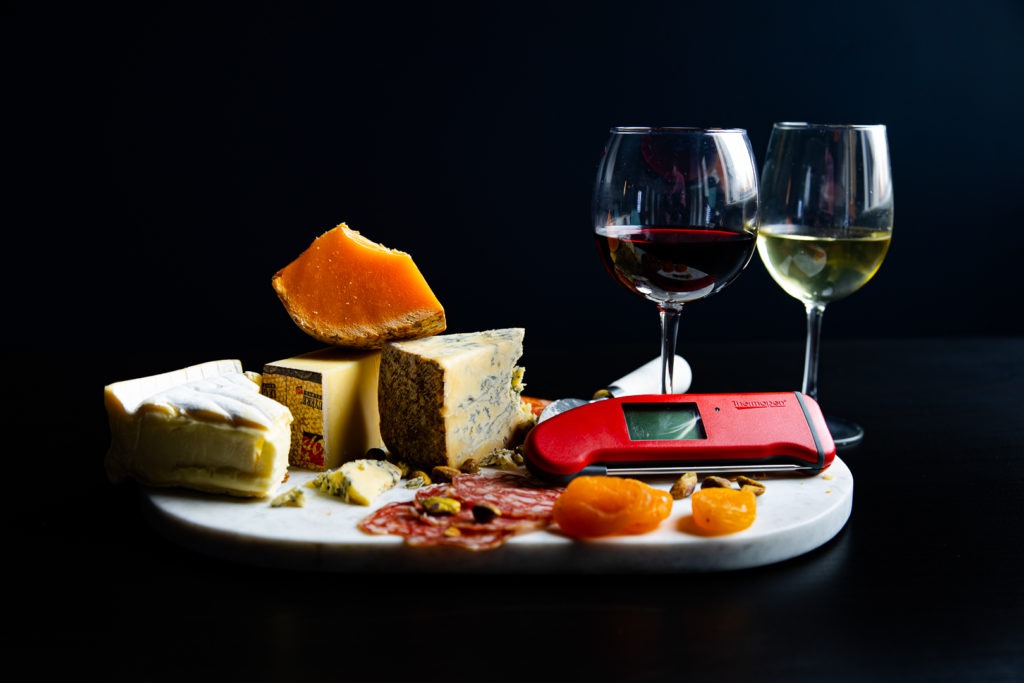
Don’t “Sweat” It
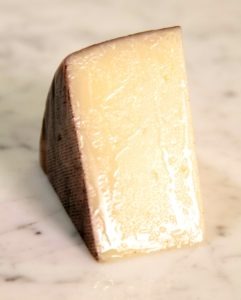
Avoid serving cheese at temperatures of 80°F (27°C) or above. At these higher temperatures, milk fat begins to melt and surface on the outside of the cheese, giving it the appearance of beads of sweat (pictured at right). Keep the cheese in its sweet spot temperature range of 68-72°F (20-22°C).
Once your wine and cheese are at their target temperatures, it’s time to relax and enjoy being with your guests! Cheers!
Putting it all together…
Wine and cheese are two undeniable pleasures that are made even better by serving them at proper temperatures. Knowing how to serve these products will increase your enjoyment of them as well and will improve the experience of your guests. But feel free to play with the temps a little bit to find what you like best. As Dougherty says, ” Remember, our sense of taste is a unique characteristic, just like fingerprints, we all ’taste’ differently. So open a bottle with some friends, get out your Thermapen®, and explore ‘wine tasting’ in a new way.”
Products Used:


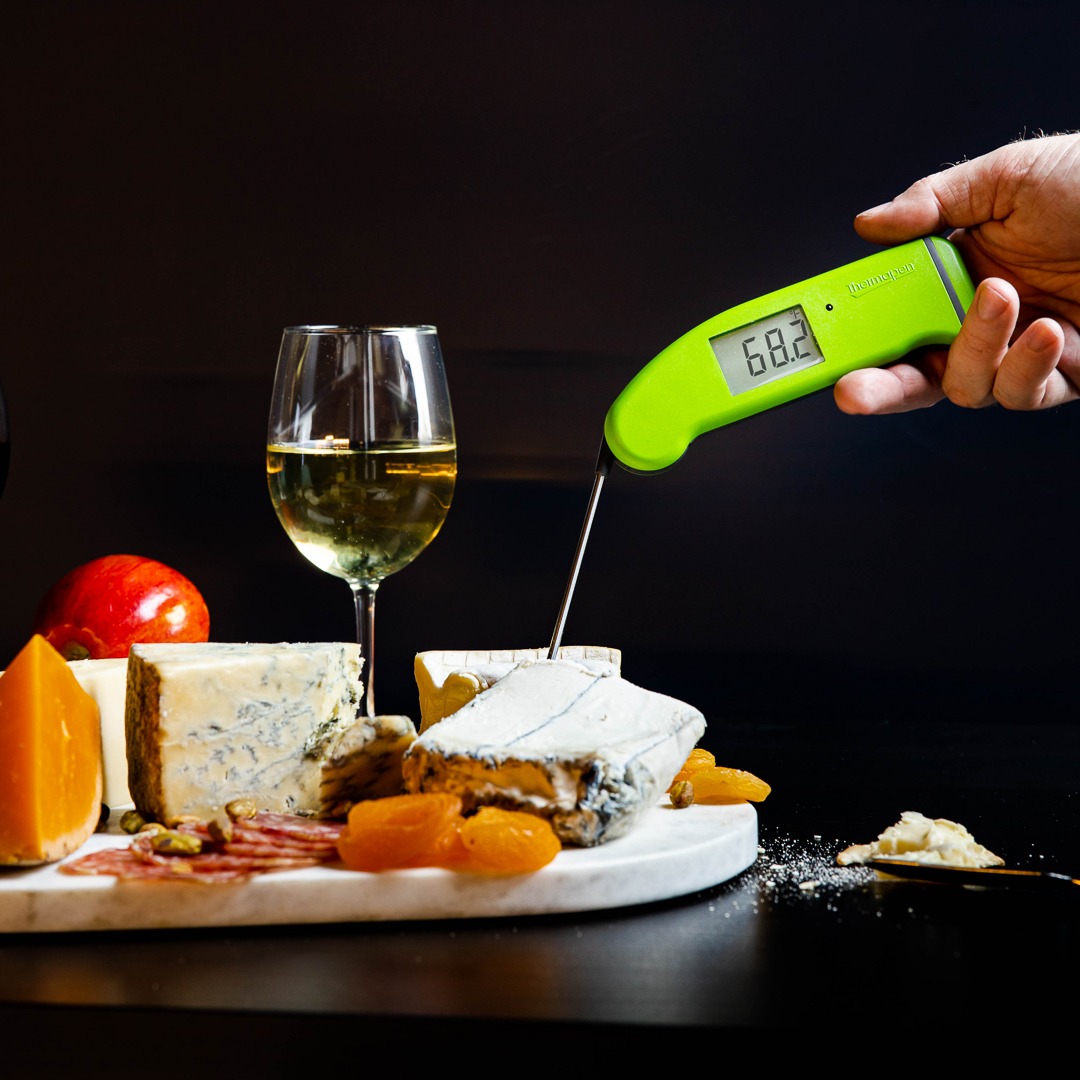
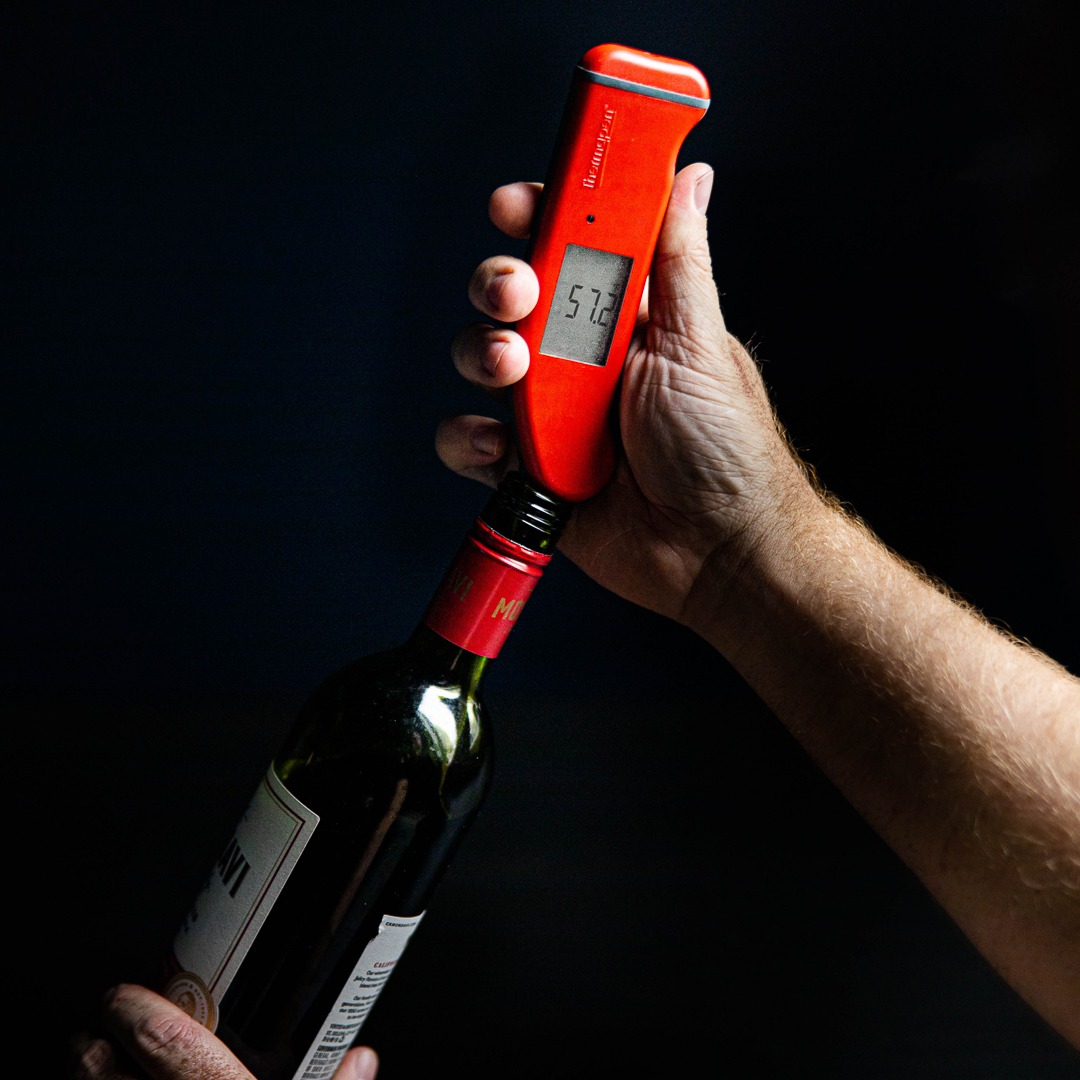
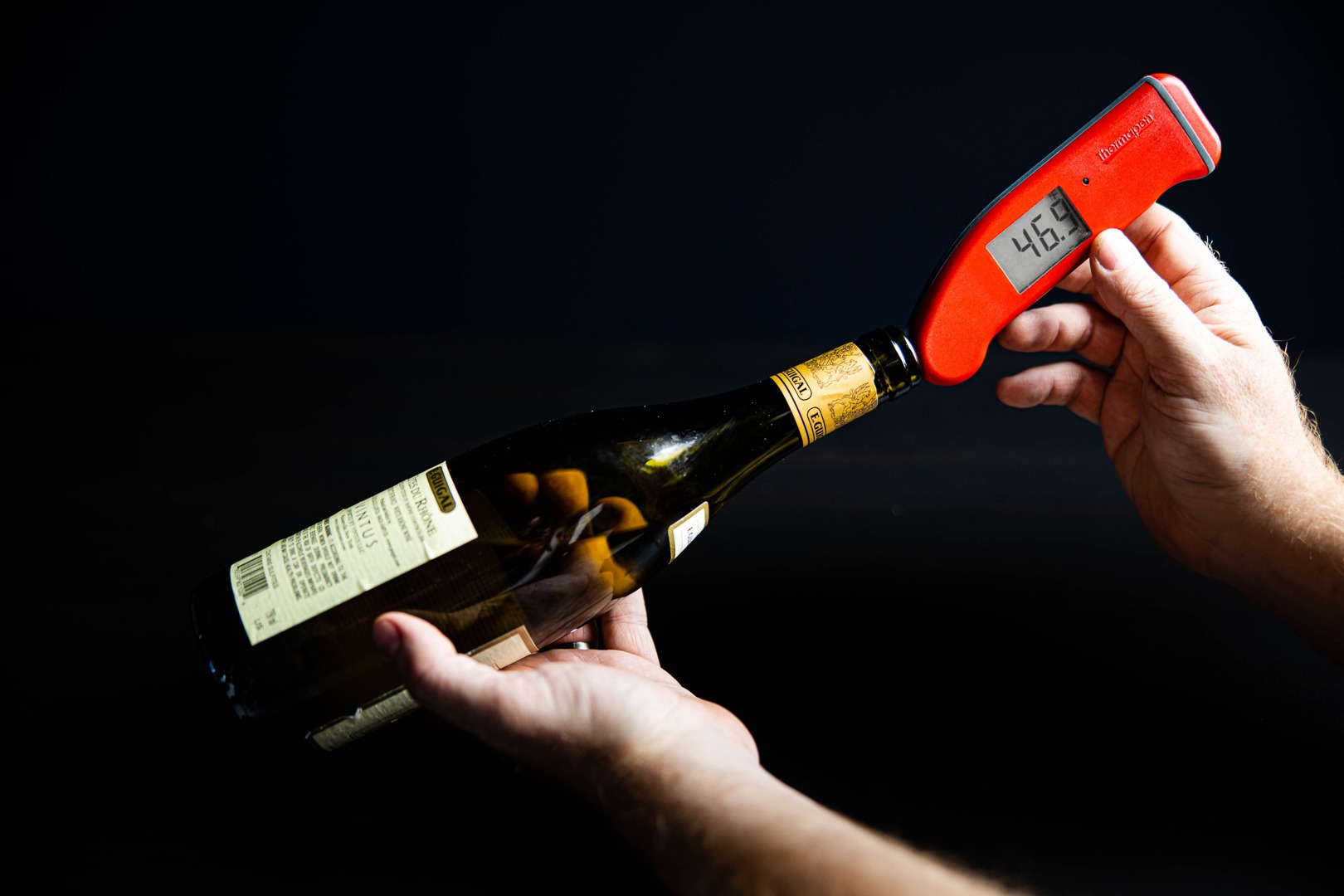
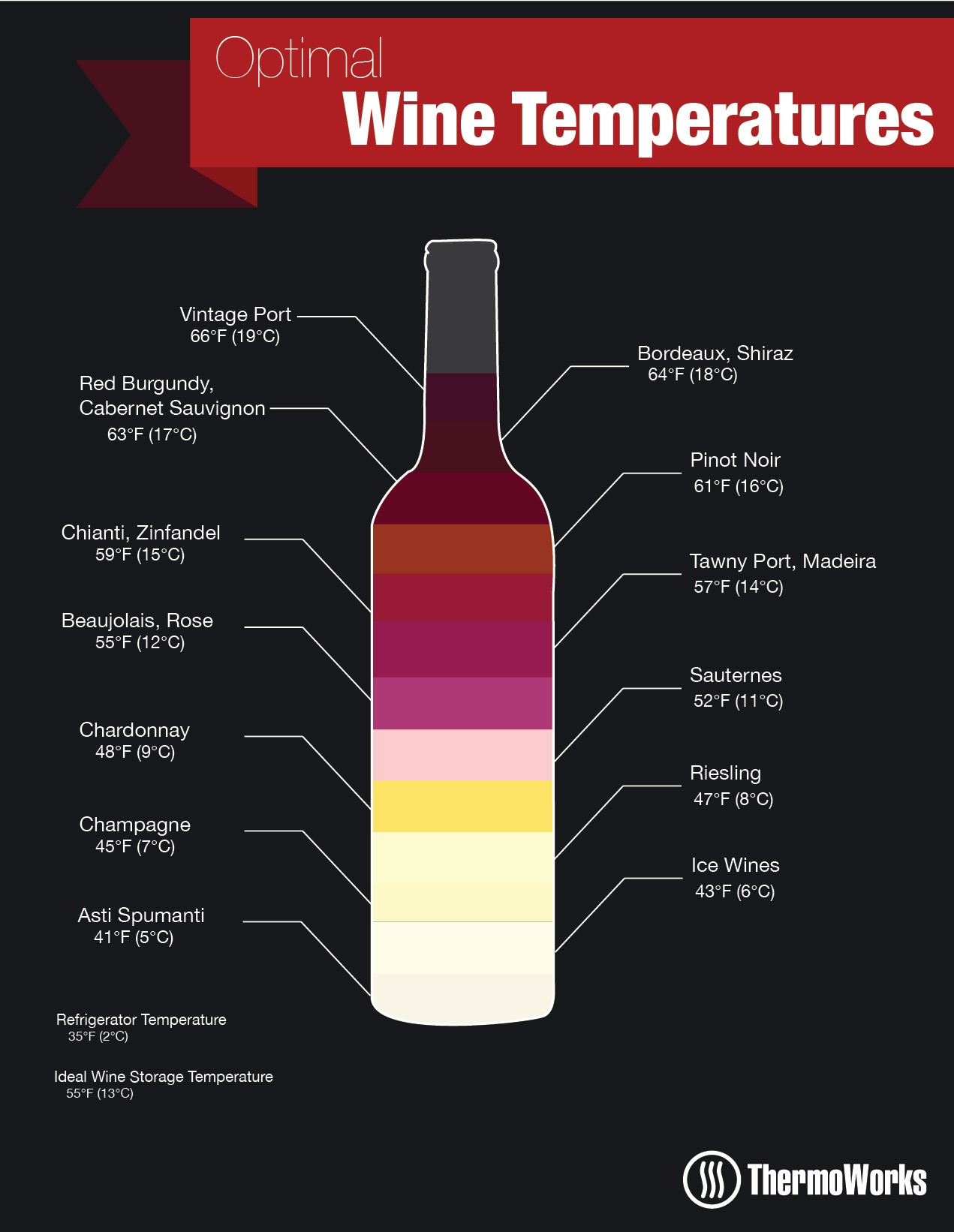
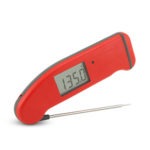
I nearly remarked about how a dark-background image is inefficient for printing, but then noticed that your printer-friendly PDF uses a white background.
I mention this as an observation that everything Thermoworks tells a story of competence and capability, even in the little details like this.